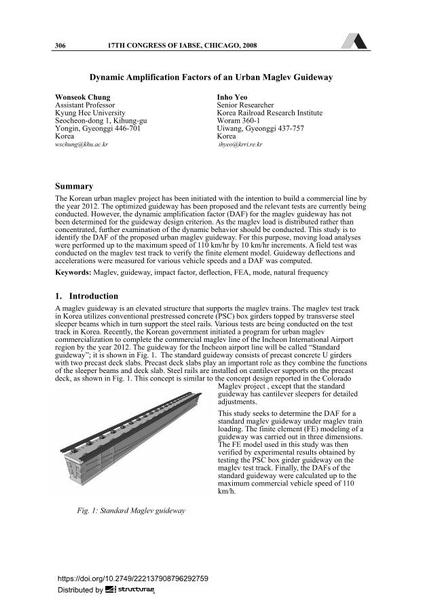Dynamic Amplification Factors of an Urban Maglev Guideway

|
|
|||||||||||
Détails bibliographiques
| Auteur(s): |
Wonseok Chung
Inho Yeo |
||||
|---|---|---|---|---|---|
| Médium: | papier de conférence | ||||
| Langue(s): | anglais | ||||
| Conférence: | 17th IABSE Congress: Creating and Renewing Urban Structures – Tall Buildings, Bridges and Infrastructure, Chicago, USA, 17-19 September 2008 | ||||
| Publié dans: | IABSE Congress Chicago 2008 | ||||
|
|||||
| Page(s): | 306-307 | ||||
| Nombre total de pages (du PDF): | 8 | ||||
| Année: | 2008 | ||||
| DOI: | 10.2749/222137908796292759 | ||||
| Abstrait: |
The Korean urban maglev project has been initiated with the intention to build a commercial line by the year 2012. The optimized guideway has been proposed and the relevant tests are currently being conducted. However, the dynamic amplification factor (DAF) for the maglev guideway has not been determined for the guideway design criterion. As the maglev load is distributed rather than concentrated, further examination of the dynamic behavior should be conducted. This study is to identify the DAF of the proposed urban maglev guideway. For this purpose, moving load analyses were performed up to the maximum speed of 110 km/hr by 10 km/hr increments. A field test was conducted on the maglev test track to verify the finite element model. Guideway deflections and accelerations were measured for various vehicle speeds and a DAF was computed. The modal properties of the proposed guideway system were also identified. It was found that the DAF for the maglev guideway is less than 2% up to the maximum speed, which implies that the dynamic amplification is not severe in the proposed maglev system. |
||||
